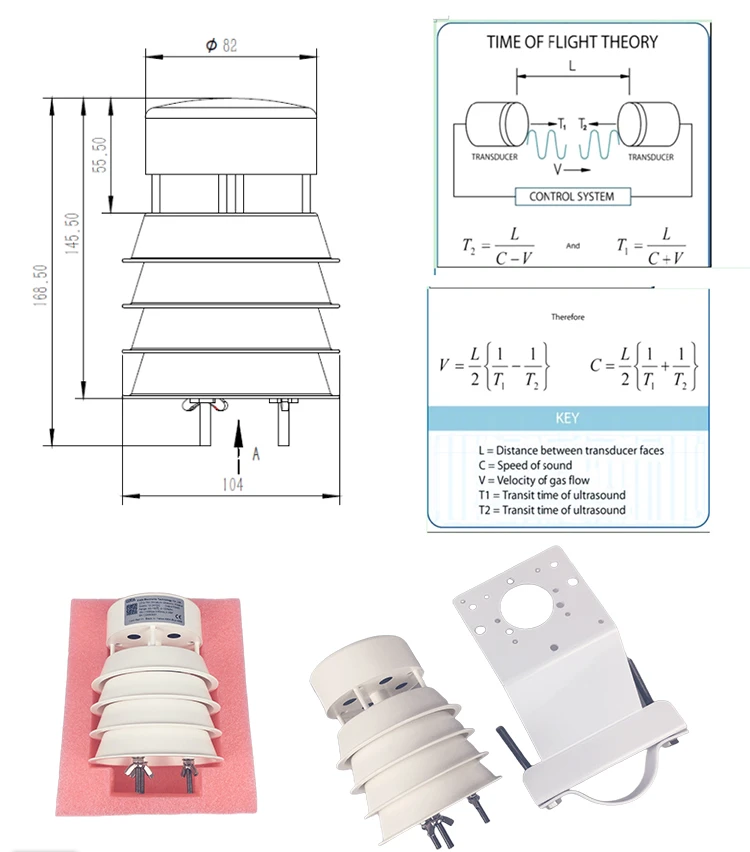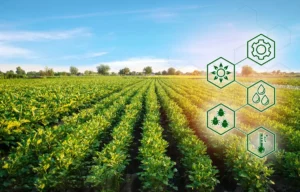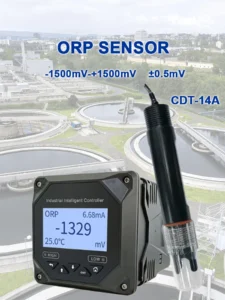Multi – functional Ultrasonic Weather Station: Revolutionizing Weather Monitoring
1. Introduction
In the ever-evolving field of modern meteorology and environmental monitoring, multi-functional ultrasonic weather stations have revolutionized the way weather data is collected and analyzed. Equipped with advanced ultrasonic sensors, these stations offer a precise and holistic approach to measuring a wide range of weather parameters. Their growing adoption spans across various domains, including professional meteorological forecasting, agricultural management, and even certain consumer applications, where accurate weather data is indispensable.
2. Operating Principles of Ultrasonic Sensors in Weather Stations
2.1 Wind Speed and Direction Measurement
At the core of these weather stations are ultrasonic wind sensors, which function based on the time-of-flight principle. These sensors employ several ultrasonic transducers arranged in a defined geometric configuration. When determining wind speed, the absence of wind leads to uniform travel times for ultrasonic signals between transducers in all directions. However, in the presence of wind, the speed of the ultrasonic signals either increases or decreases depending on the wind’s direction relative to the transducer pair. By calculating the differences in time-of-flight between various transducer pairs, the station can accurately determine wind speed.
To measure wind direction, the system evaluates the pattern of time-of-flight discrepancies among multiple transducer pairs. Advanced algorithms process this data to pinpoint the exact direction from which the wind originates. This method ensures highly sensitive and precise wind measurements, capable of detecting even minor variations in wind patterns.
2.2 Temperature and Humidity
Sensing (in Certain Models)
Some state-of-the-art ultrasonic weather stations also feature sensors for measuring temperature and humidity. For temperature measurement, the system leverages the relationship between air temperature and the speed of sound. By timing how long an ultrasonic pulse takes to travel a fixed distance, the station calculates air temperature based on established physical principles derived from the ideal gas law.
For humidity detection, ultrasonic sensors utilize materials whose acoustic properties vary in response to moisture content. As relative humidity fluctuates in the environment, these changes in material properties are recorded by the station, enabling accurate measurement of atmospheric humidity levels.
These enhanced capabilities underscore the versatility and precision of multi-functional ultrasonic weather stations, positioning them as invaluable tools in fields requiring meticulous weather monitoring and analysis.
3. Advantages of Multi-Functional Ultrasonic Weather Stations
3.1 High Accuracy
Ultrasonic sensors deliver exceptional accuracy compared to conventional weather measurement tools. For instance, ultrasonic wind sensors can gauge wind speeds with a precision of ±0.1 m/s and detect wind direction within a few degrees. When it comes to rainfall, ultrasonic rain gauges excel in precision, particularly during light rain conditions, minimizing errors caused by factors such as evaporation or surface tension—limitations often seen in traditional gauges.
3.2 Low Maintenance
Due to their non-contact design, ultrasonic sensors have fewer mechanical components than traditional counterparts. This significantly reduces the likelihood of wear and tear, leading to lower maintenance needs. For example, ultrasonic wind sensors eliminate the need for mechanical parts like cups or vanes that may jam or deteriorate in harsh weather environments. As a result, these sensors are more reliable and require infrequent servicing, even under demanding conditions.
3.3 Fast Response Time
Ultrasonic sensors are particularly adept at detecting rapid fluctuations in weather parameters. For wind-related measurements, they can react to sudden gusts within milliseconds. This instantaneous response is critical in scenarios like aviation, where abrupt changes in wind speed or direction can pose serious safety challenges.
3.4 Durability
Designed for resilience, these weather stations thrive in extreme conditions. Their ultrasonic sensors are often encased in robust, weather-resistant housings, enabling operation under extreme temperatures, high humidity, and exposure to corrosive elements commonly found in coastal or industrial settings. This durability ensures long-term, unsupervised functionality even in remote or challenging locations.
4. Applications
4.1 Meteorological Forecasting
Professional meteorological organizations worldwide are integrating multi-functional ultrasonic weather stations into their operations. The precision data they provide enhances forecasting models by accurately measuring parameters like wind speed, direction, and rainfall. This allows meteorologists to predict weather phenomena more reliably, from storm formation and front movements to extreme events like hurricanes and tornadoes.
4.2 Agriculture
In agriculture, these weather stations serve as vital tools for optimizing farm management practices. For instance, data on wind speed and direction helps farmers determine optimal times for applying pesticides or fertilizers, reducing waste and avoiding chemical drift toward unintended areas. Rainfall statistics aid in refining irrigation schedules to conserve water and protect crops from over- or underwatering. Additionally, temperature and humidity data support crop monitoring by enabling early detection of conditions favorable for disease outbreaks, as many pathogens thrive under specific climatic conditions.
4.3 Aviation
Aviation depends heavily on accurate meteorological data, making ultrasonic weather stations integral for guaranteeing flight safety. Pilots rely on precise information about wind speed and direction during critical phases like takeoff, landing, and mid-flight adjustments. Thanks to the rapid response of ultrasonic sensors, airports can provide real-time updates on conditions such as sudden wind shear—one of the most dangerous phenomena in aviation.
4.4 Environmental Monitoring
Ultrasonic weather stations play a crucial role in environmental studies by providing consistent long-term weather data to track climate change impacts. Additionally, they are deployed for monitoring air quality in urban settings where pollutant dispersion is heavily influenced by wind patterns. Their versatility makes them indispensable for studying both localized pollution and global atmospheric shifts over time.
5. Future Developments
The evolution of multi-functional ultrasonic weather stations holds promising advancements in sensor technology and usability. Ongoing research is focused on achieving even greater accuracy, particularly in demanding environmental situations. For instance, efforts are underway to design sensors capable of differentiating between rain, snow, and sleet with enhanced precision.
Another major area of innovation lies in the integration of advanced wireless communication technologies. Future models are likely to feature seamless connectivity options for transmitting data in real time to cloud-based platforms. This will grant users—from meteorologists to farmers—instant access to crucial weather information from anywhere around the globe.
Additional advancements include sensor miniaturization and energy-efficient designs, which will expand accessibility for individual users and mobile applications. These improvements aim to make ultrasonic weather stations more practical and affordable across numerous fields while maintaining their high standards of accuracy and durability for both professional and personal use.













